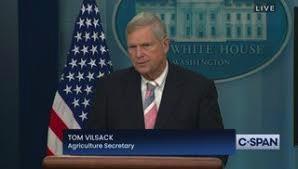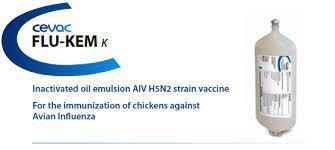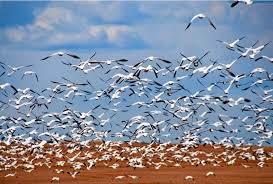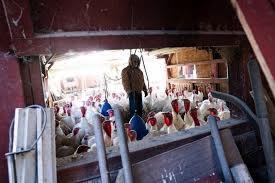 In a statement issued on February 14th, Secretary of Agriculture Tom Vilsack stated, “The USDA is 18 months or so away from identifying a vaccine for the current strain of bird flu and is developing a process to distribute it.” This Orwellian “officialspeak” was also entered into testimony before a Congressional hearing.
In a statement issued on February 14th, Secretary of Agriculture Tom Vilsack stated, “The USDA is 18 months or so away from identifying a vaccine for the current strain of bird flu and is developing a process to distribute it.” This Orwellian “officialspeak” was also entered into testimony before a Congressional hearing.
For the record:
- The current H5N1 strain of avian influenza, is essentially a pandemic strain prevalent North and South America, Asia, Africa, and Europe for over three years. The strain is responsible for losses of over 100 million commercial poultry and has made severe inroads into the populations of susceptible marine and migratory birds.

- Vaccines are available off-the-shelf. The major multinational biopharmaceutical manufacturers could, subject to authorization and in the absence of bureaucratic restraints supply the needs of the U.S. poultry industry within weeks. There would be sufficient vaccine to implement regional vaccination programs for required egg production flocks, turkeys, and broiler breeders in areas at risk.
- The USDA does not have to “develop a process to distribute vaccine”. Competing poultry health companies have the capacity to supply vaccines that would conform to international and U.S. standards of safety and efficacy.

- The USDA has been attempting to eradicate what is essentially a seasonal and regionally endemic disease since early 2022. The Department now recognizes the futility of eradicating an infection that is introduced and disseminated by millions of migratory birds. The most effective biosecurity is less than absolutely effective given the growing reality that the infection can be transmitted over relatively short distances by the aerogenous route.
During the 2024 IPPE, reports were received on studies conducted by the Agricultural Research Service of the USDA on evaluating alternative vaccines. The presentation by the senior ARS scientist concerned was pitched inappropriately and delivered at a level defying comprehension by members of the United Egg Producers. This commentator, who was also bemused by the rapid series of power points and considerations of complex molecular biology, was reminded of the statement by Albert Einstein “if you can’t explain what you are doing to a ten-year old, maybe you do not know what you are actually doing.”
A recurrence of HPAI that is almost inevitable in the spring of 2024 and probably later in the fall suggest that an 18-month period to “identify a vaccine” is an unconscionable delay and will cost both the USDA (i.e. taxpayers), producers and above all consumers many billions of dollars if flocks are unprotected.

The USDA is “planning to discuss poultry vaccinations with trading partners amid concerns that other countries could restrict imports of vaccinated U.S. poultry”. There has been a groundswell supporting vaccination including endorsement by the World Organization for Animal Health. The World Health Organization is expressing concern over possible emergence of zoonotic avian influenza given the duration of the panornitic and the extension to a wide range of terrestrial and marine mammals.
Clearly the USDA has been negligent in not preemptively pursuing agreements relating to certification of products from vaccinated flocks destined for export as being free of avian influenza at the time of slaughter. PCR is readily available, and it is now possible to differentiate between vaccinated and infected flocks since there is no imperative to rely on serology as in decades past. Unfortunately, administrators are congenitally incapable of adapting policy to new technology or reversing positions in the face of new evidence.
It is questioned who is advising Secretary Vilsack and whether he is obtaining the best possible information based on current scientific and economic realities. It is possible that APHIS administrators are stuck in a 1990’s time warp and are hidebound by precedent and policy that inhibits consideration of practical and realistic alternatives. To their way of thinking, adoption of a limited industry-segment and regional vaccination program would represent a denial of previous decisions encompassed in the ‘whack-a-mole approach to control of HPAI applied during the 2022-2024 epornitic.